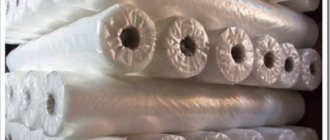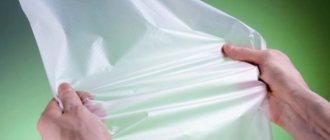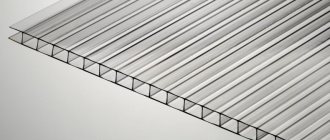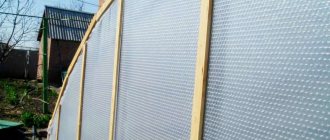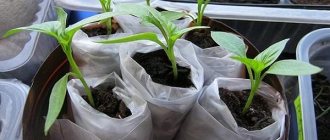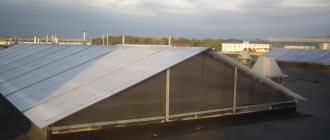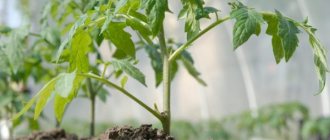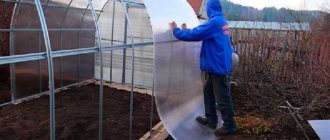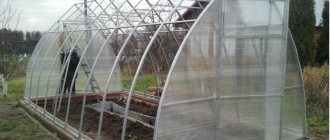Products
>
Polyethylene films
>
Polyethylene film Polyethylene film has found many areas of application in human economic activity. In construction and renovation, this film is used to cover floors and furniture; for thermal and waterproofing of roofs, floors, attics and basements; to protect foundations, structures and building materials, etc. Polyethylene film is most successfully used in the packaging industry, since it is suitable for almost all materials. Depending on the film production technology, the resulting material can be of the required color, specified thickness, specific shape and with a set of additional properties required by the consumer.
Indication of film thickness in markings
In the film marking according to GOST, the thickness is indicated in mm. In online stores and on price tags, the film designation is simplified. It may look like this: “Transparent polyethylene film 3 X 100 m, thickness 80 microns, (GOST 10354 82).”
This is a film with a thickness of 0.08 mm. The scope of application of the film, additives that give it special properties (stabilizers) are indicated in full markings on the factory label.
Thickness of popular types of polyethylene films
- Food.
- For greenhouses.
- For construction work.
- Packages and bags.
How often to change plastic film in a greenhouse
Regardless of what quality of film you use, it is recommended to change it at least once every 3-4 years. Polyethylene slowly becomes cloudy from constant contact with ultraviolet radiation, which reduces the amount of light transmitted. You may not notice it, but the plants definitely will. Reducing the amount of light will lead to a decrease in yield, stunting of crops, the appearance of plant diseases, etc.
Change the film more often, choose stabilized transparent polyethylene, and all conditions for rapid and high-quality growth of crops will be created in the greenhouse.
Film for greenhouses.
Thin ones transmit light better, thick ones are stronger and last longer. Covering film thickness: 100 microns (0.1 mm) to 200 microns (0.2 mm). Adding stabilizers to polyethylene increases its strength and light transmittance.
Film thickness is important for calculating the load on the greenhouse frame. The cheapest unstabilized polyethylene film 100 microns weighs about 200 grams per linear meter. With a thickness of 200 microns - already more than 500 grams.
A few words about the material
Polyethylene film is usually produced in rolls with a width of 1 to 3 meters. Sometimes it looks like linen, but most often it has sleeves. It is impractical to cover the greenhouse with a single sleeve, that is, in two layers, without cutting it. This will not affect the durability of the coating in any way. In addition, the bend of the sleeve turns out to be the most vulnerable part of the coating and is the first to tear and wear out. If you still decide to cover the greenhouse with a sleeve, we recommend that you first stick transparent tape to the folded area. There is no point in covering existing holes with tape.
Due to the widespread availability of polyethylene and its low cost, the film quickly gained enormous popularity in crop production. It's really effective. But in order to achieve maximum results from its use, you should carefully approach the selection issues. The main criterion is the thickness of the coating.
Packages and bags.
The marking of polyethylene containers includes the designations LDPE (high-density polyethylene) and HDPE (low-density polyethylene). Bags marked LDPE are designed for weights up to 20 kg. With a thickness of 100 microns, they are available in larger sizes.
ND polyethylene has less tensile strength; with a thickness of 100 microns, bags can withstand no more than 7 kg. Used for packaging bags and cheap T-shirt bags.
Garbage bags are produced in thicknesses from 10 microns for household waste to 100 microns for construction waste. Recycled raw materials are used in production.
Stretch film thickness - which one to choose?
A buyer who has decided on the choice of packaging material and settled on stretch film will inevitably face the question of choosing its thickness.
In this article we will try to objectively understand the following:
- What thickness options for stretch film are there and their purpose?
- How to choose the right stretch film thickness for your product?
What thickness options for stretch film are there and their purpose?
Modern technologies in the production of non-food stretch films make it possible to produce films from 10 to 35 or more microns in thickness.
However, each thickness has its own specific use - for what type of product this or that film is optimally suited, how the wrapping will be carried out (manually or automatically).
All films are conventionally divided into two types - for manual and automated (machine) winding. Their main difference is the cardboard sleeve (spool) on which the stretch film is directly wound.
- Stretch film for manual wrapping has a fairly light spool - from 150 to 300 grams. Its low weight is determined by its purpose - the total weight of the roller should not be higher than “comfortable” for manual winding, i.e. 2.0-2.5 kg.
- The stretch film sleeve for automated (machine) wrapping weighs approximately 1.0 kg - its weight is determined by its purpose and technical feasibility - the sleeve must withstand the mechanical load when working with a pallet wrapper. Therefore, it is quite thick and heavy. In addition, the volume of film that is wound on it is significant (from 10 to 17 kg).
Theoretically, a film of any of the above thicknesses can be used both in “manual” and “machine” versions, however, there are the most commonly used thicknesses.
The most common “market standard” for hand wrapping is 17 microns.
The most common "market standard" for automated winding is 20 or 23 microns.
Next, we will justify the choice of these particular thicknesses in more detail and briefly describe the scope of their application.
How to choose the right stretch film thickness for your product?
Thickness 17 microns is the film thickness that is most optimal for manual winding in sections:
Purpose - this thickness, 17 microns, in actual use has certain indicators for stretching, retraction, self-adhesion (sticking of film layers). The balance of these indicators is expressed in the fact that after wrapping objects, the film realizes its purpose to the maximum - it protects the product from many factors (moisture, scratches, etc.), securely fastens it, and allows the product to be transported without the risk of loss and damage.
Saving - a roll of film has quite a lot of meters, and as a result, with a small but sufficient thickness, the cost of packaging is minimal.
Ease of use – because We are talking about manual winding, then with a film thickness of 17 microns, the average person can stretch it without much effort to achieve optimal tension, without breaking or, conversely, insufficient stretching.
Film 20, and even more so 23 microns, is already harder to pull, which in practice affects the effort that, for example, a worker makes when winding. It turns out that the economic potential of the film due to insufficient stretching is unclaimed, and costs increase.
Thickness 20 or 23 microns is the film thickness that is most optimal for machine winding in sections:
Savings - the effective consumption and saving potential of 20 or 23 micron film is achieved with machine winding, because You can pre-set and ensure a constant and uninterrupted pre-stretch level, film tension level, and winding speed. In the manual version, with a thickness of 20/23 microns, this is no longer possible. These factors will ensure the minimum amount of film costs and thereby the maximum reduction in cost, while maintaining the required level of quality and reliability of fastening.
Ease of use - with the same weight, the thicker the film, the fewer meters there will be in the roll. Therefore, 20 and 23 micron films are often produced in a “machine” version - the weight of the roller is from 10 to 17 kg, this allows you to change the roller less often and therefore saves time and increases productivity. A similar roller with a thickness of 20 or 23 microns in the “manual” version will end quite quickly, unlike 17 microns.
Conclusions:
- Films with a thickness of 10.12 or a thickness of 27 microns and above are used quite rarely, moreover, in the “machine” version and are designed for the most modern pallet packers, which have a wider and thinner range of infusions.
- We can say with confidence that hand-made stretch film with a thickness of 17 microns is the optimal choice for wrapping all types of goods, objects, cargo, both light and heavy - the degree of fastening reliability is regulated by the number of layers, and does not lead to overruns and unnecessary costs.
- Film with a thickness of 20-23 microns is preferable to use for automated winding. Only in this design can the film be used as efficiently as possible.
- The real cost of film is calculated in kilograms - so we lose absolutely nothing. In “kg” the consumption will be identical!
Read more in our article: “Meters or kilograms - how to choose the right stretch film”
Finally, let's look at some answers to the most frequently asked questions:
Question: If I use manual stretch film and wrap fairly heavy objects (for example, bags of dry construction mixtures) on a pallet, wouldn’t it be more advisable to use manual film with a thickness of 20 or 23 microns, rather than 17 microns? After all, this product requires an increased degree of fastening reliability?
Answer: Of course, you can use a thicker film. However, taking into account the ease of use, the 20-23 micron film, while providing reliability, will most likely increase consumption due to insufficient tension. If we use 17 micron film, then this will not happen, because... stretching it to the required maximum is comfortable. For more reliable fastening, we just need an additional turn of winding.
Question: If I need an additional turn of winding, will I lose money?
Answer: No, you absolutely will not lose in consumption and costs. Due to the difference in thickness, at the output we will have virtually the same amount of film consumed if we measure it in kilograms. That is, we effectively waste more meters, but less thickness than using 20 or 23 microns.
We remind you that: you can ask our specialists any questions via chat, email, personal contact or using the call back form.
GO TO PRICE LIST FOR STRETCH FILM
New generation films
As for heat-saving and anti-condensation films, these expensive products have a drawback: the film itself can be designed for several seasons, but the additives that make the film heat-saving or anti-condensation only work for 1 season. In addition, it is impossible to stretch the anti-condensation film without a single wrinkle, and it is in these folds that condensation will collect, and water will not just drip onto the plants, but will rain.
However, people who grow expensive crops, especially flowers, buy such film from us.
- Lovage: cultivation, properties, types
What is 100 micrometer technical film? Basic properties of this material
The best in terms of functionality and cost is technical film 100 micrometers. It has all the properties that are so important during construction and repair work on the site. Technical film 100 microns is a material used during technical work.
It is widely used in the following areas:
- Greenhouse work.
- Creation and preparation of goods that are packaged in such film.
- Construction. Regarding this point, the film is widely popular as an insulating material. Technical polyethylene film is 100% resistant to moisture.
The 100 micron technical film is resistant to tearing and does not allow moisture to pass through, which can have a beneficial effect on the progress of the work being carried out. Atmospheric phenomena do not have any effect on this type of film, and contact with the ground does not cause significant harm to it.
Technical film 100 microns is widely used in construction and agriculture. In the first option, the film is used as an insulating material. In the second, greenhouses and greenhouses are simply covered with film, making the environment more favorable for plants.
Technical film 100 microns has a number of properties that everyone who wants to purchase this type of building materials simply must know.
Among them:
- Resistance to physical damage (tears, tears, punctures by sharp objects).
- Possibility of stretching (elasticity). This property is useful when packing fragile items.
- Resistance to low temperatures, requiring the use of polyethylene film during frosts.
- Wide possibilities for universal use. The film can be cut into any quantity, which is used based on the needs of the builder.
- High degree of transparency, allowing you to see everything that is behind the film. This fact is very well used in packaging for medium and long distance cargo transportation.
- Light weight and thickness. Technical polyethylene film 100 microns is very interesting in its structure. Polyethylene best fits the surface of the transported material, which allows loaders not to worry about the safety of the appearance of the product they are carrying or transporting.
